The Wrecks of Jordan
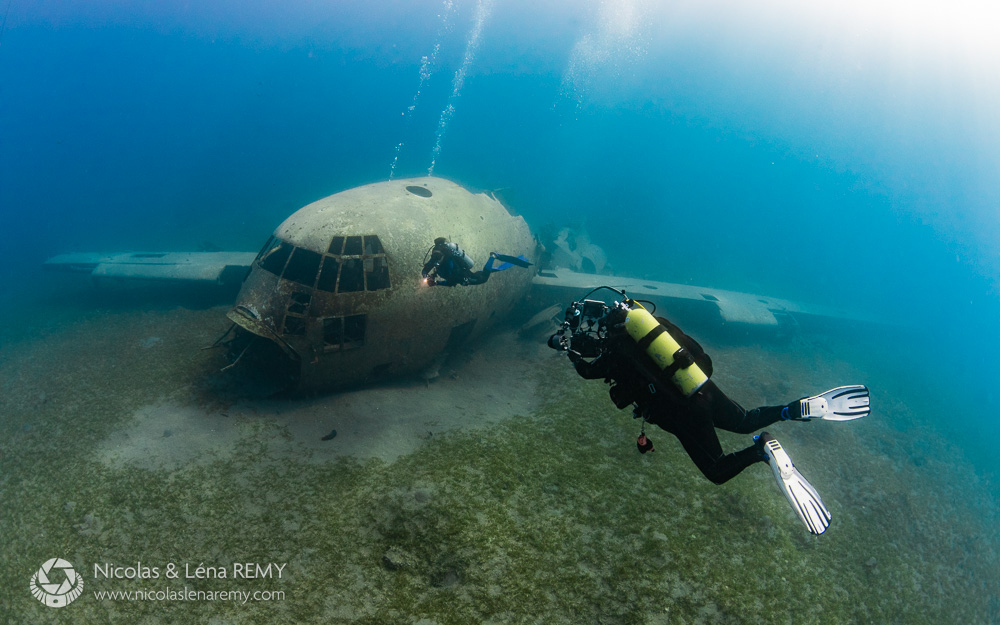
Introduction
Ask the average Joe the first thing they know about Jordan, and they will probably mention Petra, the iconic ancient city, carved into massive red cliffs. If you ask a scuba diver, you might also hear about some great wreck diving, which got even better in recent year, as tanks, helicopters and a massive aircraft got purposely sunk there.
I had a chance to dive these wrecks in June 2023, as I got invited to enter the 1st Aqaba Underwater Photography Competition. Together with my model & lighting assistant Matt Waters, we also had time for some sight-seeing, which I will also cover in this post.
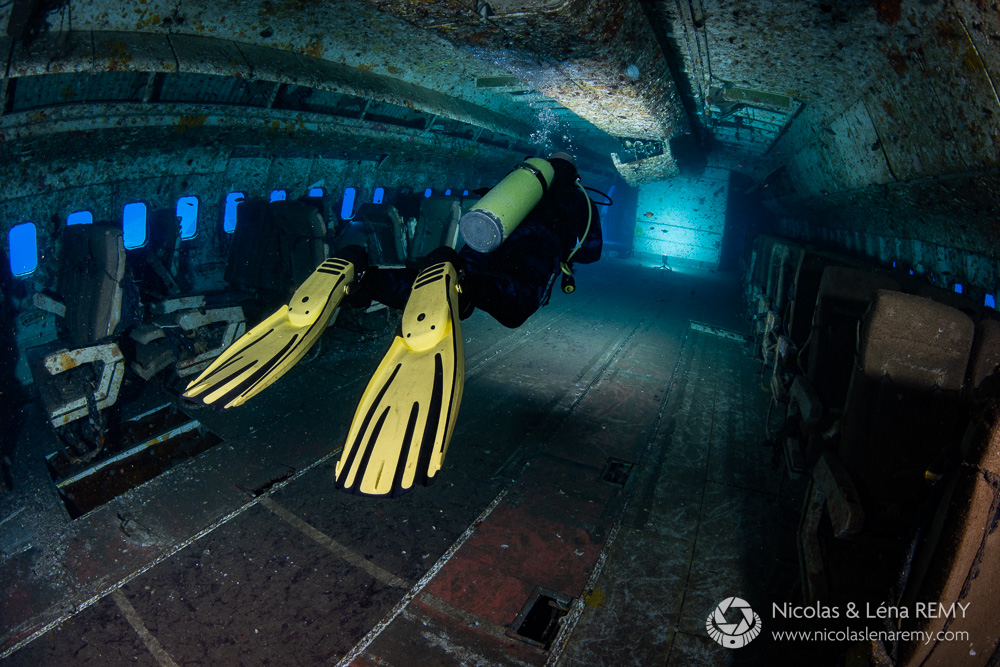
Getting there
The Kingdom of Jordan is located in the heart of the Middle East and is mostly land-locked, save for 27km of coastline around the city of Aqaba, where the diving takes place. Aqaba is tucked in the northeastern tip of the Red Sea, in between neighboring Eilat (Israel) and Saudi Arabia, and facing the Sinai Peninsula (Egypt). You can fly direct to Aqaba or fly to Amman, and transfer by private car (120 JOD) or VIP bus (20 JOD) in about 4 hours.
There are several good hotels in Aqaba and many dive centers. We chose Deep Blue Dive Center because of their passion for underwater photography, efforts to minimise environmental impact and their comfortable boats. We were treated with a warm, Jordanian welcome, 5-star service and had lots of fun onboard.
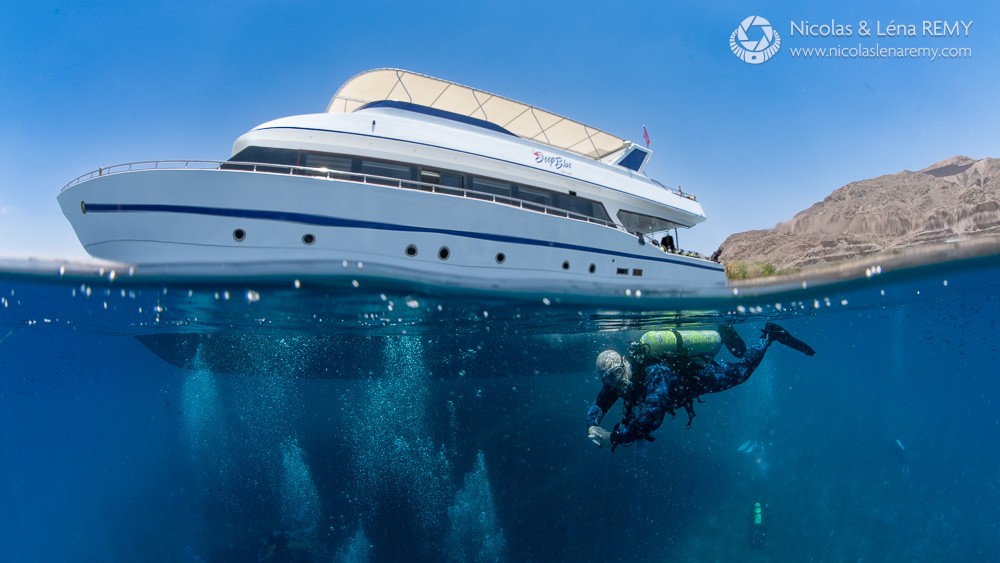
Diving logistics
Every morning, a mini-bus picked-us up at our hotel downtown and drove us to the Tala Bay marina, where Deep Blue Dive Center is located. We would then embark one of their boats for a double-tank dive, with a tasty lunch served in between, and refreshments after the second dive. Most days we were on Deep Blue 2, a 23.9 meters long motor yacht which had the amenities and comfort of a full blown liveaboard, even though we were using it just for daytrips!

Upon return to the marina, we would leave our gear onboard, and the Deep Blue staff took care of cleaning and drying our wetsuits and put everything together for the next day, so that we could just hop back into the bus and return to enjoy Aqaba city.
It’s possible to do a third dive and night dives are on offer too.
The story behind the wrecks
Aqaba is nowadays one of the world’s top wreck diving destinations, and this has a lot to do with the Jordanian Royal Family’s keen interest in scuba diving. This all started in 1985, when the late King Abullah II ordered the sinking of the Cedar Pride ship, followed by an anti-aircraft tank (M42 Duster) in 1999. A tank sitting on sand is an unusual sight to say the least, and photos of that particular wreck have been widely published. Due to the pandemic, it is perhaps less known that an extra 20 wrecks got scuttled in 2019, which I will cover below.
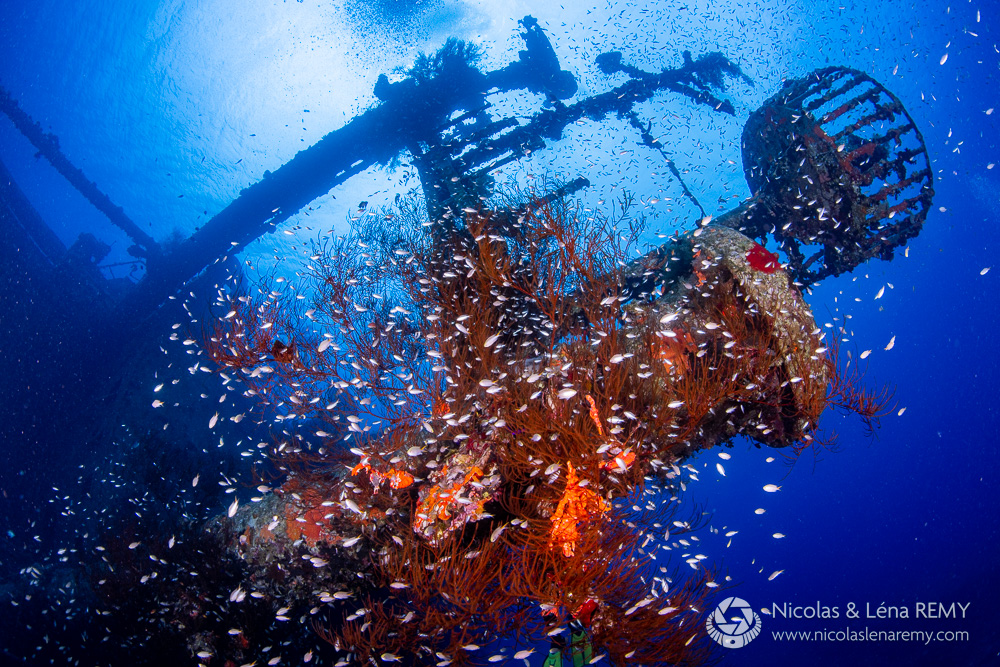
Cedar Pride
The 74m-long Cedar Pride shipwreck is Aqaba’s first purposely sunk wreck. Having spent 38 years in the Red Sea, it features hard and soft corals plus interesting marine life: lionfish, clownfish, turtle, anthias and giant frogfish are some of the regulars. The wreck sits between 27 and 9 meters depth, and I found safety-stop depth was perfect to take a good look (and scenic photographs) of the ship, courtesy of the 20-25 meters visibility.
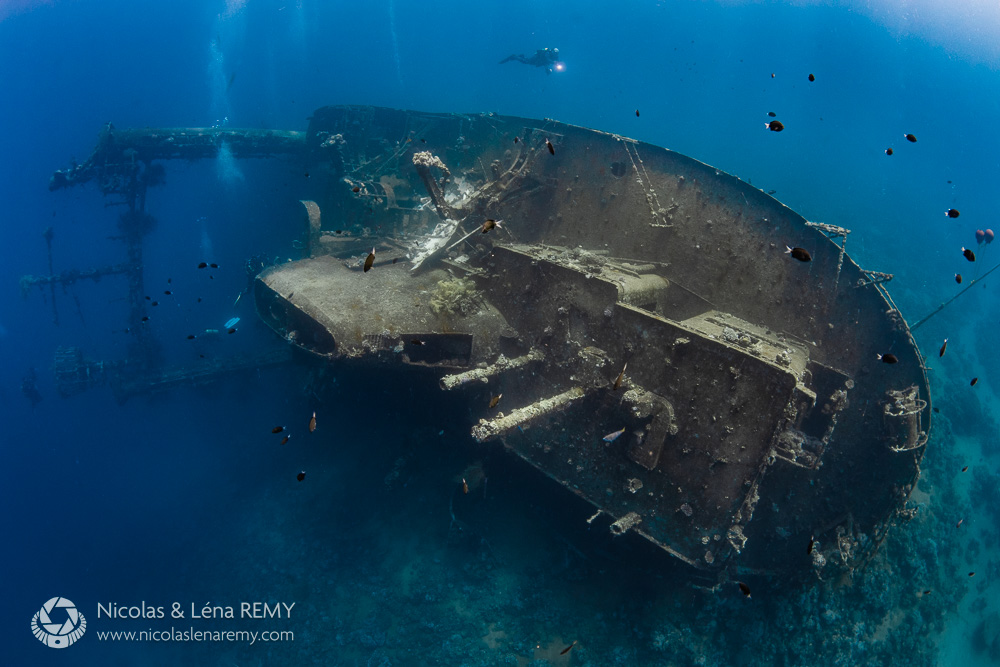
Given the sheer size of the boat, it is worth several visits to cover the various points of interest, and I recommend alternating between morning and afternoon dives, for a different atmosphere. My favorite spot is the crow’s nest at 15 meters depth, which nicely stands out from the blue water, while being covered in colorful corals and fish life – a great photo opportunity. Another good photo-spot is the stern (17m deep), whose handrails are covered in red corals. If you back-off a little from the stern, towards deeper water, you’ll find a small pinnacle inhabited by anemonefish: another good photo to take, with the wreck visible in the background. It’s also possible to explore the engine room and cabins inside the wreck, for divers suitably qualified.
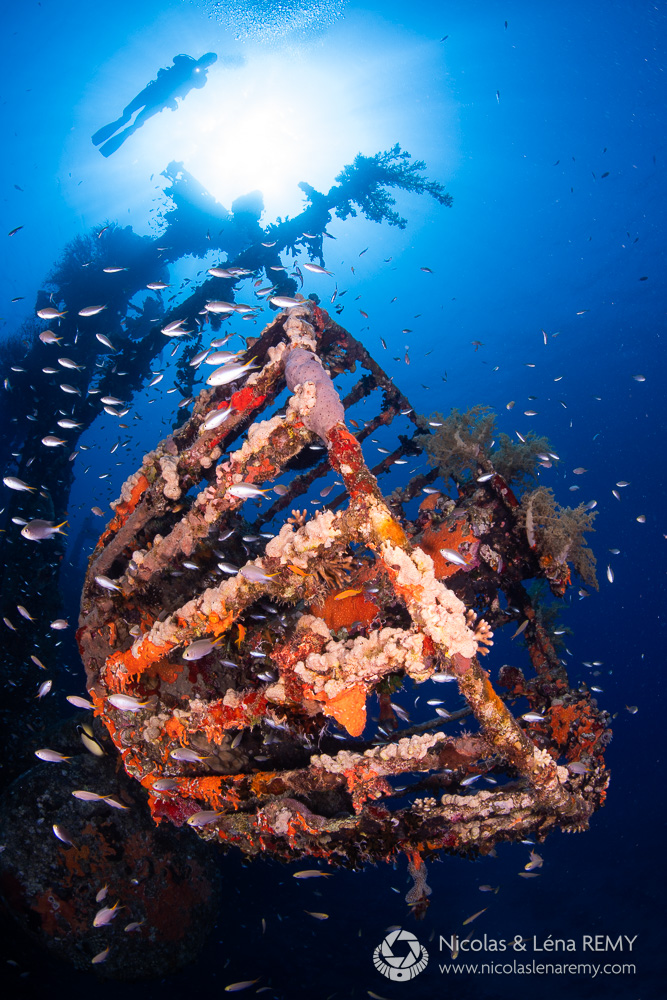
Hercules C-130 and “the Tank”
Aqaba’s first plane wreck is the Hercules C-130, a large military troops carrier which was sunk in 2017 nearby the iconic M42 “duster” tank, which has been there for 24 years. The plane is quite shallow, with the cockpit sitting in about 13 meters of water, while massive tail is in 17 meters depth. Unfortunately, in 2020 a severe storm roared through the gulf and cut the C-130 in two, so you will find the tail and the cockpit are now separated.

Both make for interesting photos and you’ll find a skeleton, tastefully installed on the pilot’s seat, sharing the cockpit with a school of glassfish. You will encounter a small coral garden as you ascend towards the beach, and at 6 meters depth you can spend your safety stop exploring the famous M42 tank, which has been sitting there for 24 years.
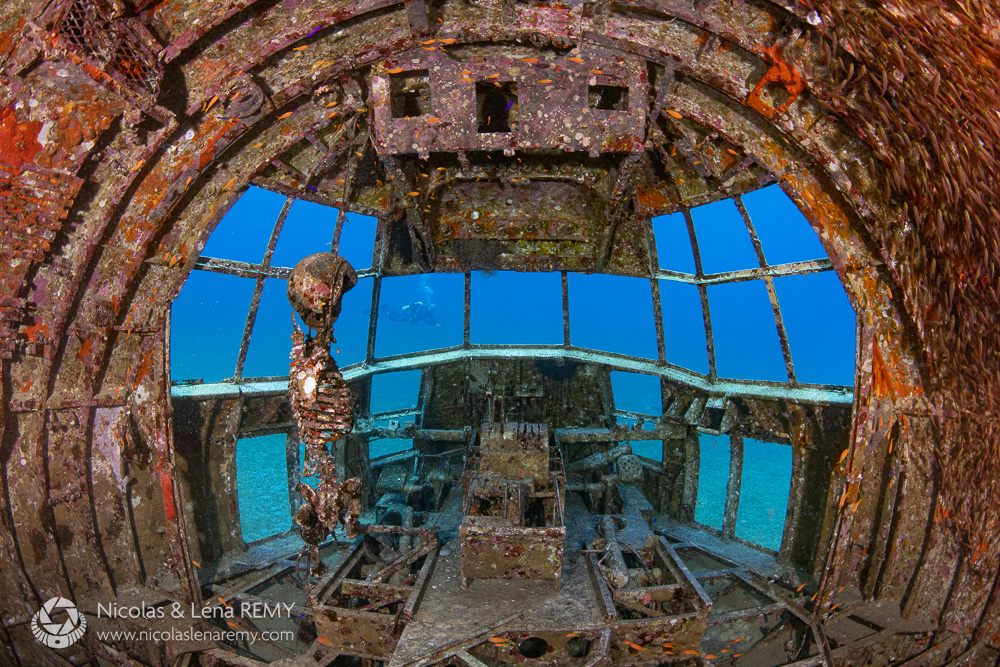
The Tristar Plane
A second plane wreck got scuttled just before Covid19, but this one was a commercial aircraft: a Lockheed L-1011 Tristar. With a 50m length and 400 passenger capacity, the TriStar is a wide-body airliner, in the same league as your modern Airbus A350 or Boeing 787. For anyone who likes air travel, this aircraft will be a joy to dive: the two rows of three seats have been left inside the two cabins, along with carry-on baggage compartments, roof-mounted video projectors and – cherry on the cake – the cockpit holds all navigation instruments.
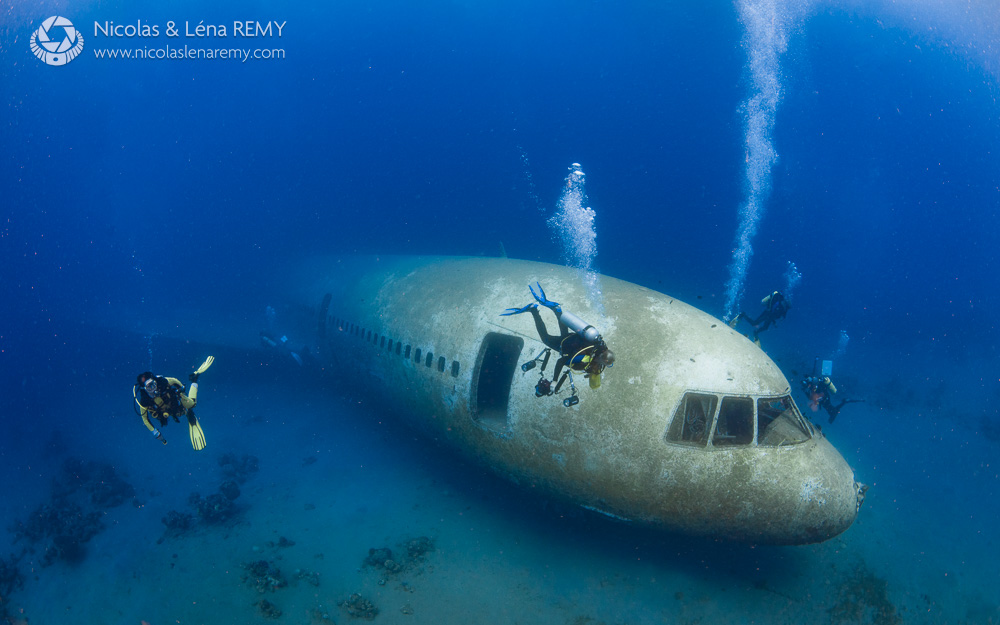
The cockpit sits on a 17m sandy bottom, with the rest of the plane sloping down to a maximum of 30m, which is the bottom of the tail. The wreck is easy to penetrate and the depth inside the passenger cabins goes from 16 to 26 meters. Unlike modern twin-jets airliners, the TriStar has a third engine mounted on the tail, which you can enter from the bottom of the deepest cabin and exit via the intake, bringing you above the fuselage. This is one of the many photo opportunities on this wreck, which photographers will enjoy visiting multiple times. If it is marine life you’re after, check below the wings were soft corals have grown rapidly, and between the seats for the occasional porcupinefish!
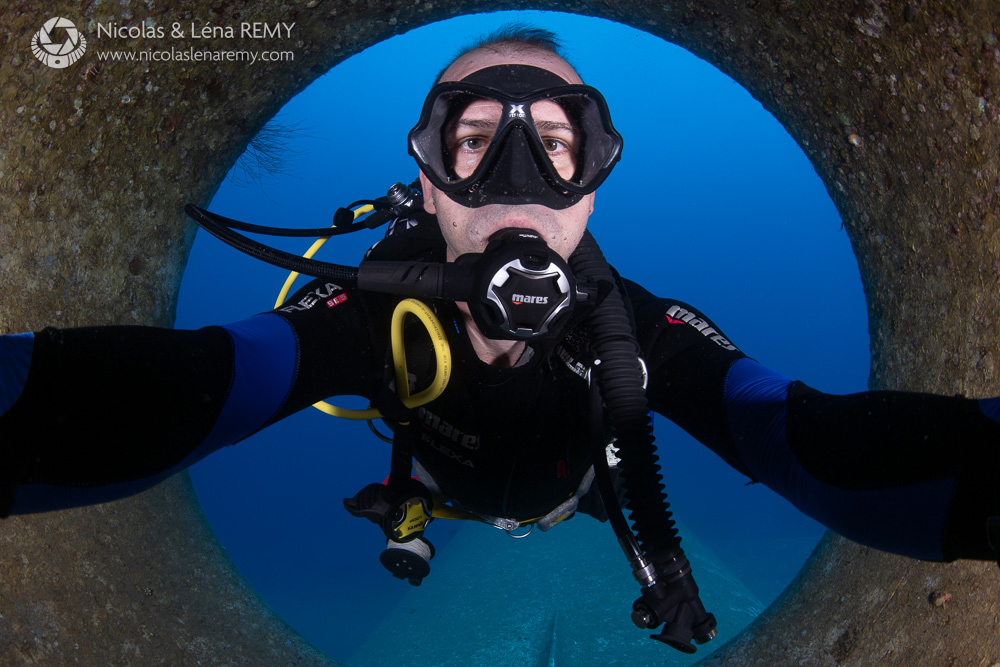
The Military Museum
After our first dive in the Underwater Military Museum, I remember telling my buddy Matt: “mate this place is the ultimate playground for grown-ups!”
Indeed, no less than 19 wrecks got scuttled off the same beach, to create the world’s first underwater military museum. Imagine swimming over Cobra helicopters, cannons, jeeps, and various armored vehicles, including troop carriers, M42 Duster tanks, an ambulance and FV701 Ferrets!
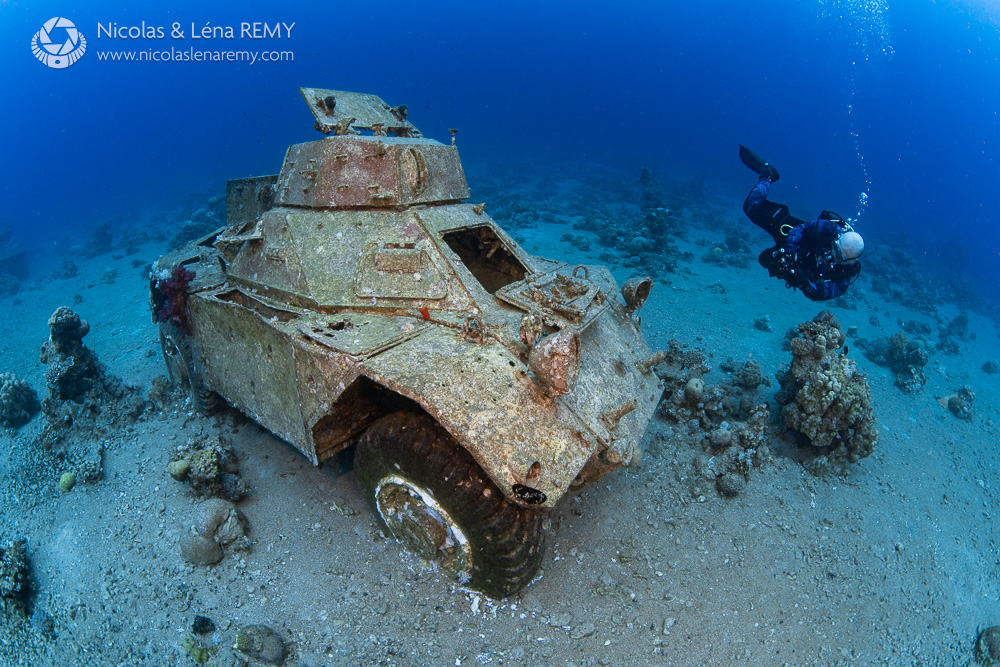
As divers, we tend to swim about a meter over the bottom and this is best to spot the marine life which now inhabits those wrecks. However, I recommend you also ascend by a few meters, to appreciate the museum from above. It feels like flying when you’re hovering above these miliary vehicles, which you will notice are laid-out in battle formation. Most of the wrecks 15 to 20 meters deep, with one of the two choppers being the deepest point at 27 meters, and two jeeps are parked at safety-stop depth.
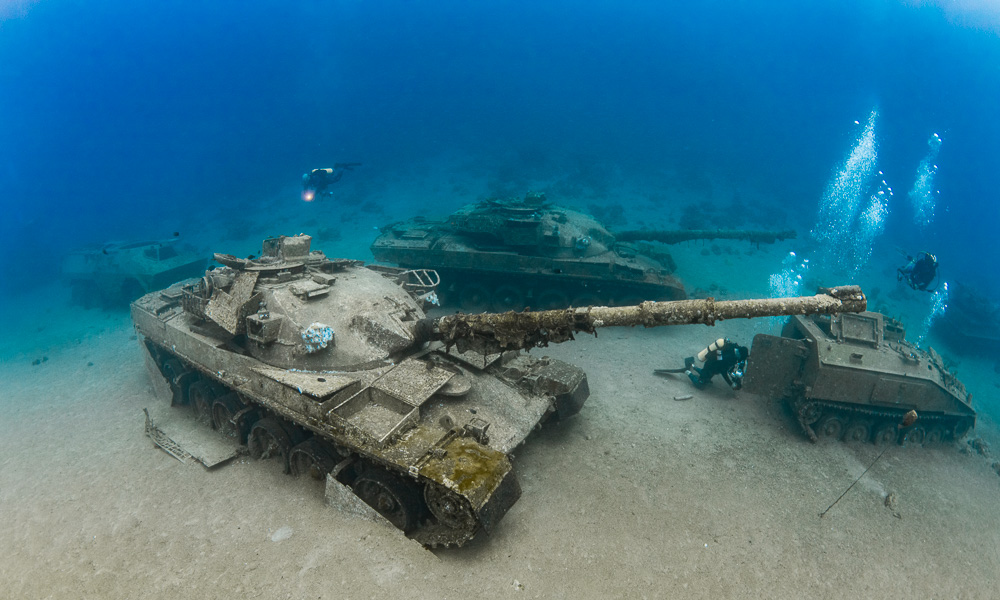
Obviously the 19 wrecks are the main attraction, but I wish I could come back with a macro lens: my buddy noticed two robust ghost pipefish next to a helicopter, and a large concentration of garden eels lives just above the M42 tanks.
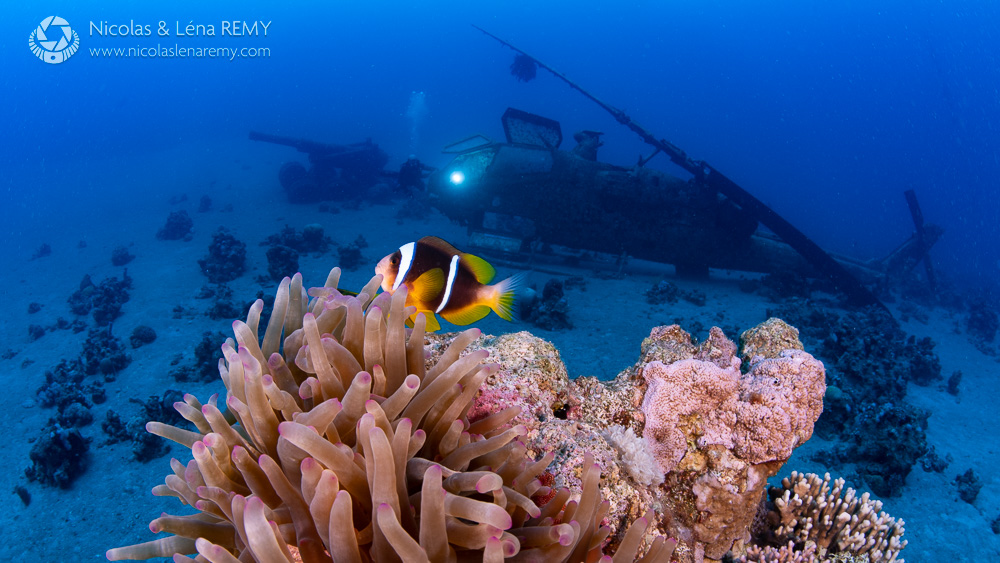
It is possible to see all of the wrecks in one dive, if you’re good on air and don’t mind swimming long distances. As a photographer though, I much preferred dedicating my dives to specific parts of the site.
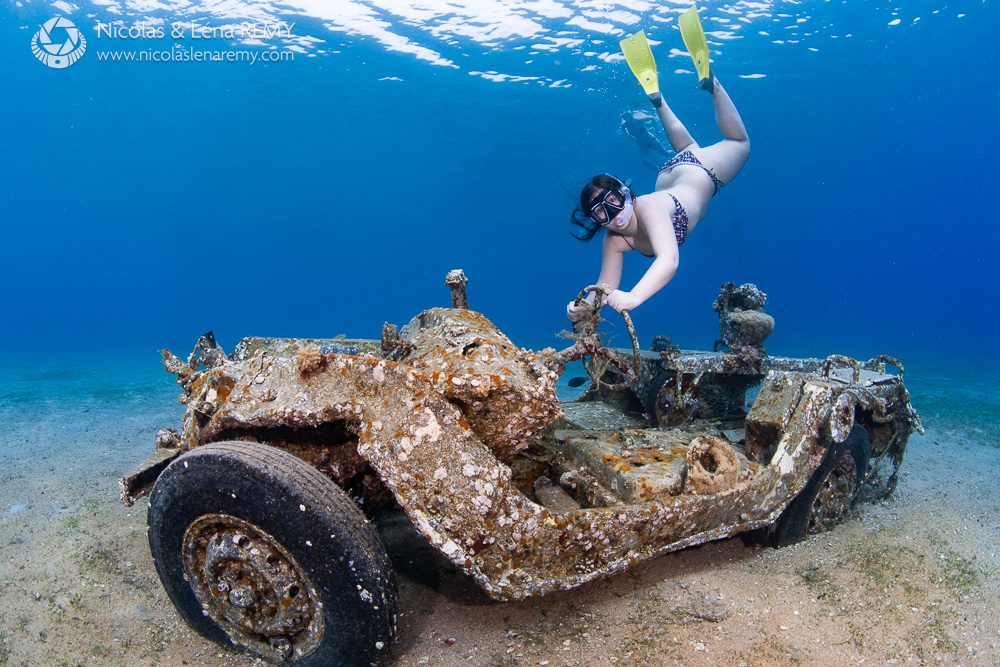
Coral dives
Aqaba also has several coral reefs to offer, plus some very lively jetties. We had one dive under Bernice Jetty, and despite the shallow 4 meters depth, it was an underwater photographer’s paradise: lionfish were patrolling the pylons, covered with colorful soft corals, while glassfish were diffusing the sunrays just below the surface. A treat for the eye and the lens alike!
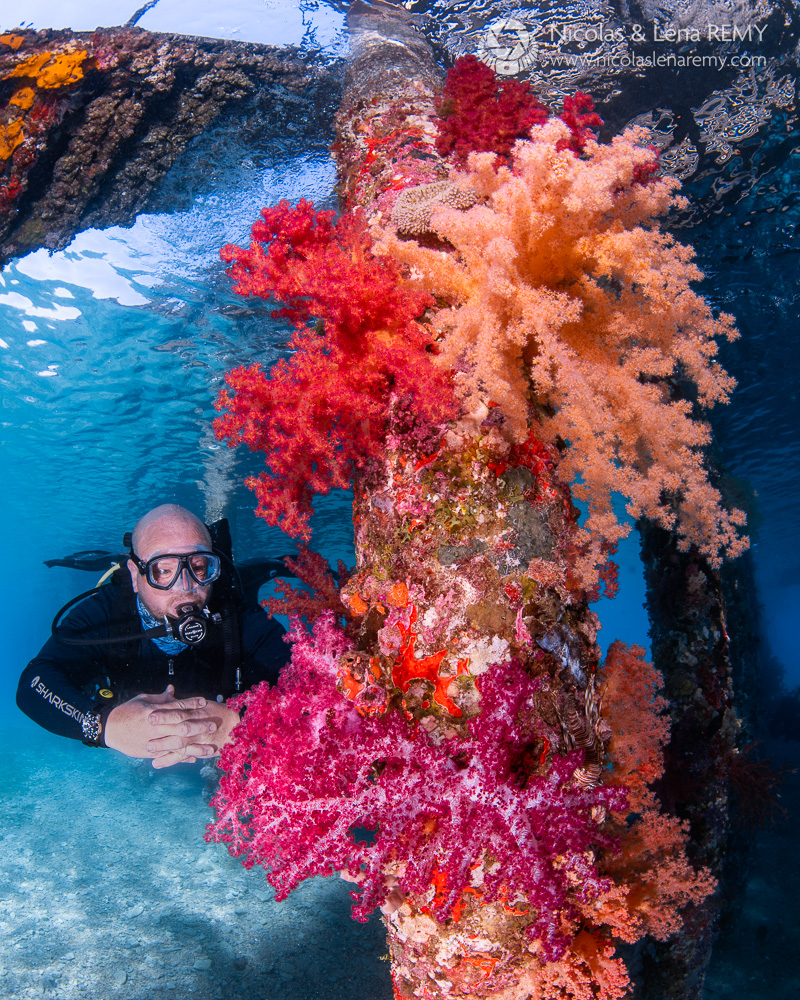
Sight-seeing
Petra is only a 2 hour drive away from Aqaba, making it an easy day-tour to complement the diving, and I can’t recommend it enough. It is one thing to see the ancient city in photos, but an awe-inspiring experience to see the ancient building unfold before you, as you walk in between red sand-stone cliffs.
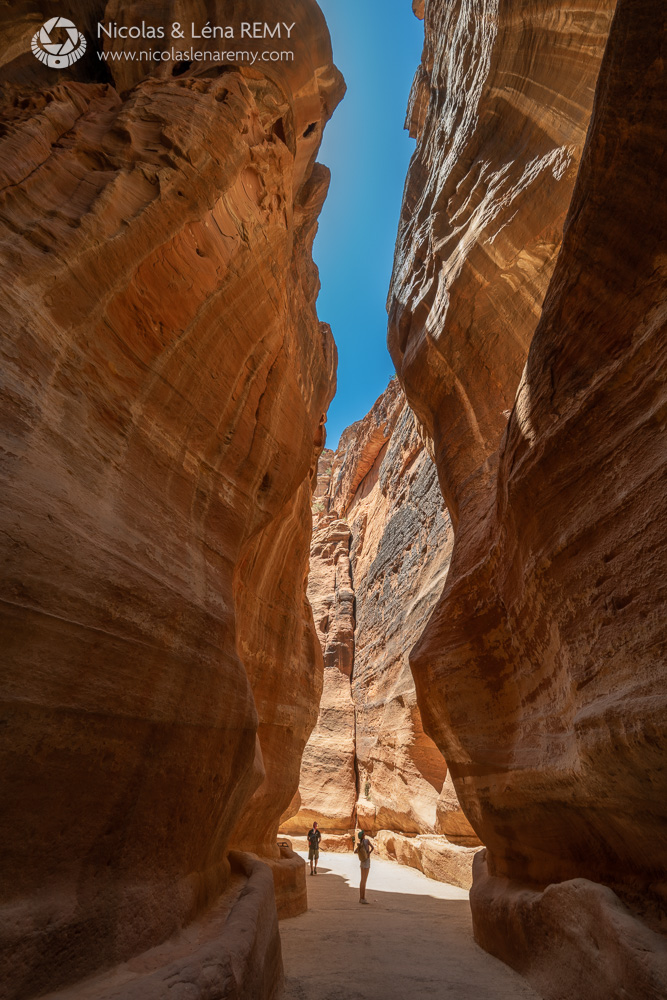
The Wadi Rum desert is close-by too and both places can be visited as a daytrip from Aqaba. The Dead Sea is another interesting sight but much further away, so it is easier to visit from Amman.
Final words
The wrecks of Aqaba offer a fun diving experience and a great playground for underwater image makers. There is a good diversity of small marine life too and I’ll bring a macro lens for my next visit. Aqaba itself is a lively city where it felt safe to walk after sunset: we much enjoyed the local eateries and occasional roof-top bar. All-in-one, Jordan offers a great combination of unique diving and bucket-list sites like Petra and Wadi Rum.
If you’re considering a visit to Jordan, I can’t recommend enough that you contact Deep Blue Dive Center, a photography-friendly operator who offer an exclusive 10% discount to Members of The Underwater Club! Check our Partners page for further details.
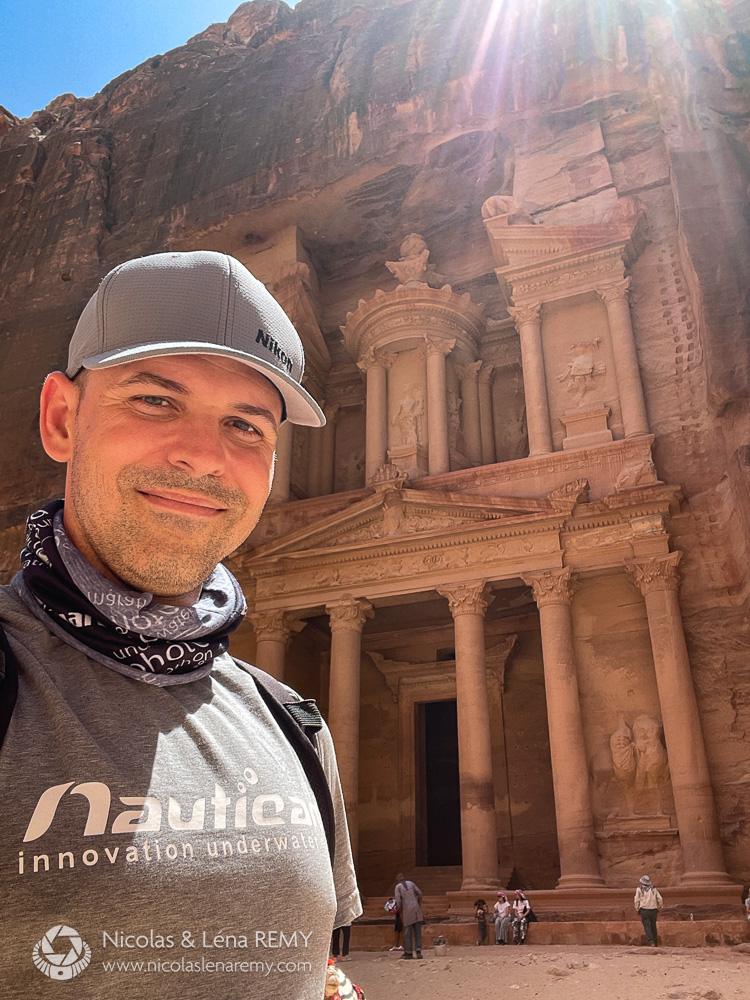
About the author
Nicolas Remy (@nicolaslenaremy) is an Australia-based pro shooter and founder of online underwater photography Club & School The Underwater Club. His images have been widely published in print and digital media, and have won over 35 international photo awards.

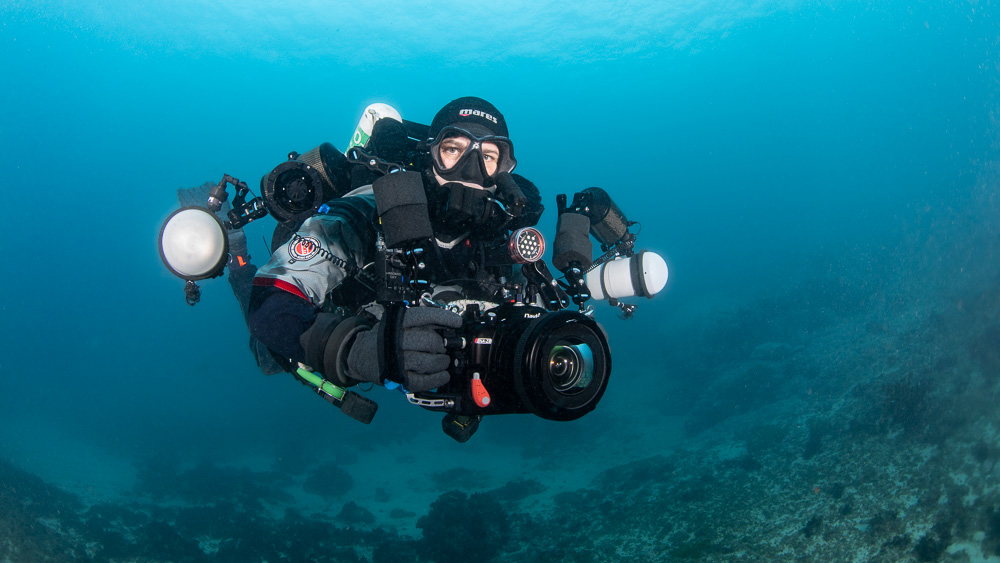
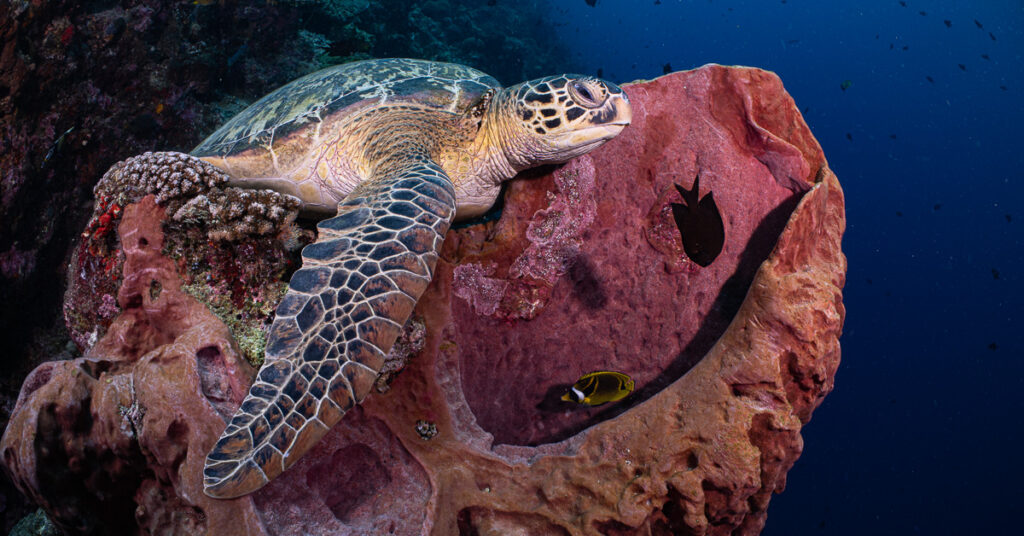

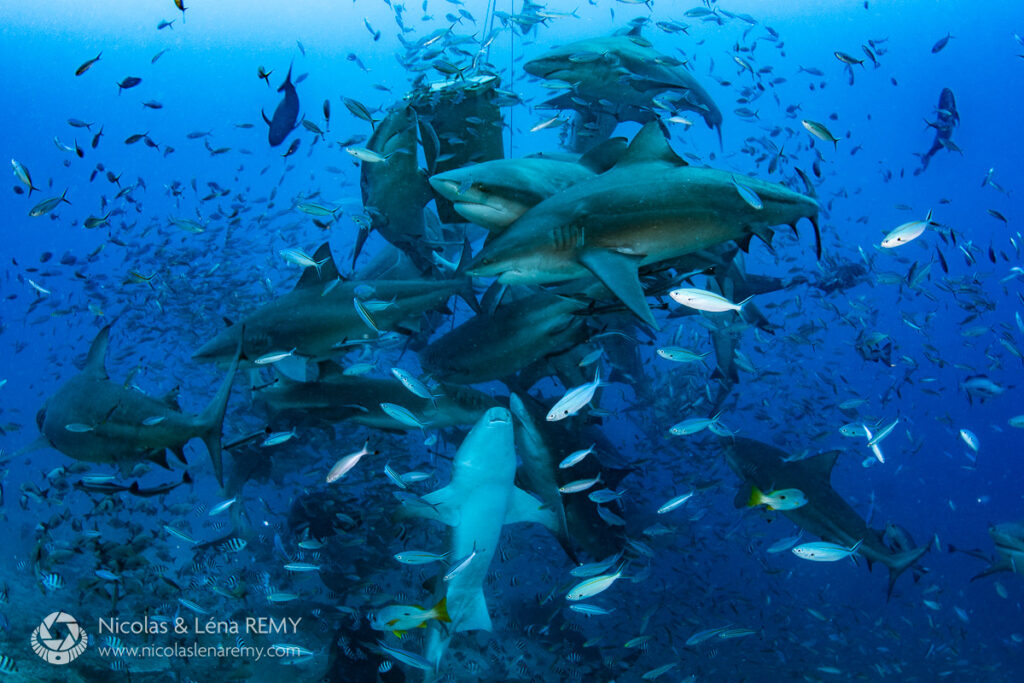

Comments